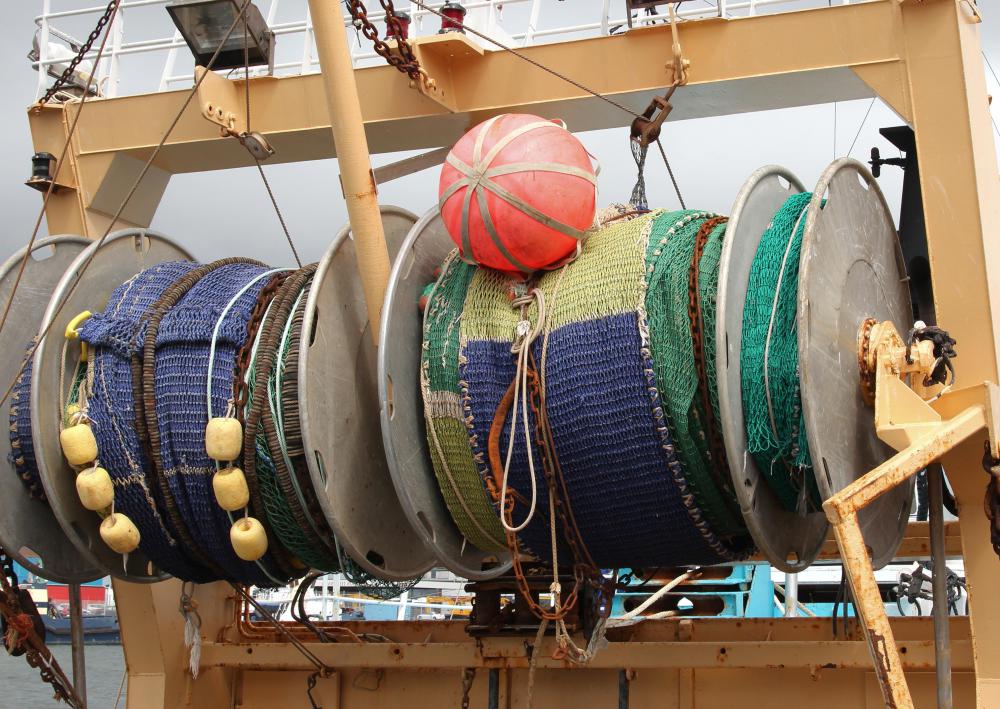At AllThingsNature, we're committed to delivering accurate, trustworthy information. Our expert-authored content is rigorously fact-checked and sourced from credible authorities. Discover how we uphold the highest standards in providing you with reliable knowledge.
What is an Ayu?
An ayu is a species of fish that is the only member of the Plecoglossidae family. It is found in lakes and rivers as well as coastal regions throughout Japan, China and Taiwan. The ayu is sometimes known as the sweetfish due to its sweet tasting flesh. Its diet consists largely of algae and small animals including insects and worms. Due to its popularity as a food source the fish is farmed in large numbers for commercial reasons and is a highly sought after fish.
The ayu is an amphidromous fish, which means that it lives in both salt and fresh water regions and migrates between the two. In this case the fish moves between salt and fresh water during its lifetime but doesn’t do so to breed. This is why the fish can commonly be found in lakes as well as coastal regions. Typically, the fish will only live a single year and hence it is also known as the year fish. There are some ayu fish, however, which survive for longer than this.

The fish is native to the Palearctic zone, which is one of the eight zones of the Earth. This zone is the largest of these eight and includes certain regions of Europe and Asia including the Himalayas. Along with these regions the fish is also found in more southern areas such as the Korean Peninsula and Taiwan. During spawning season, which occurs during the spring, adult fish travel from coastal regions up into rivers. The larvae which are spawned during this time then travel straight back to the sea before the cycle begins again.

Ayu fish are omnivores, which means they eat both plants and other animals. Due to the small size of the fish it mostly feeds on small insects as well as water sponges. The plant food eaten by the fish mainly consists of algae. Algae includes a range of different species of underwater plants including seaweed and sea sponges.
In Eastern Asia the ayu fish is a popular dish due to its sweet tasting flesh. Although the fish are farmed in large quantities they are also caught by local fishermen and women who use techniques such as fly fishing and trapping. Some anglers in Japan also use cormorant fishing to catch ayu — a technique using a cormorant bird which catches the fish and then stores it in its beak before giving it to the fisherman.
Frequently Asked Questions
What is an Ayu fish and where can it be found?
The Ayu, also known as the sweetfish, is a species of fish native to East Asia, particularly found in the rivers of Japan, Korea, and parts of China. It thrives in clear, cool freshwater streams and is known for its distinctive fragrance, which is often likened to a watermelon or cucumber.
Why is the Ayu fish considered unique?
Ayu fish are unique due to their particular life cycle and their highly territorial nature during the breeding season. They are born in freshwater, migrate to the sea, and then return to freshwater to spawn. The Ayu's sweet smell and delicate flavor also set it apart as a culinary delicacy in regions where it is found.
How do Ayu fish contribute to their ecosystem?
Ayu fish play a significant role in their ecosystem by contributing to the nutrient cycle. As they migrate from sea to freshwater, they bring marine nutrients inland, which can help support the productivity of riverine environments. Additionally, they serve as prey for larger fish and birds, thus being integral to the food web.
What are the conservation statuses of Ayu fish?
Conservation statuses of Ayu fish vary by region, but they are generally not considered endangered. However, habitat degradation, water pollution, and overfishing pose threats to their populations. Efforts in Japan include releasing hatchery-reared Ayu to support wild stocks and maintain the species for ecological and recreational purposes.
How are Ayu fish typically used in cuisine?
Ayu fish are highly prized in Japanese cuisine for their sweet taste and are often grilled whole with salt, a method known as 'ayu no shioyaki'. They can also be served raw as sashimi or sushi, and are sometimes simmered in sweet sauces or soups, offering a range of culinary experiences.
What is the significance of Ayu fishing in Japanese culture?
Ayu fishing is deeply embedded in Japanese culture, symbolizing the arrival of summer. It's not just a means of subsistence but also a recreational activity that brings people closer to nature. Traditional Ayu fishing methods, such as using trained cormorant birds, are considered an art form and are part of Japan's cultural heritage.
AS FEATURED ON:
AS FEATURED ON:












Discuss this Article
Post your comments